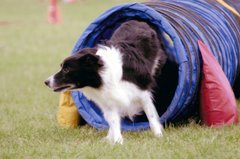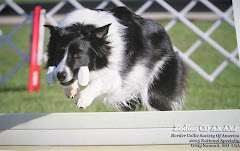MCTs are most common on the skin and can have a varied appearance. They may get larger and smaller as histamines are released and swelling results-like a bee sting for example), be ulcerated, itchy, or hairless. It is important to have all skin or subcutaneous masses checked as MCTs can mimic other, more benign masses.
MCTs are often easily diagnosed via cytology. It is important to know you are dealing with a mast cell tumor prior to surgery because sometimes the doctor will want to pre-treat your pet with anti-histamines. Also they will know what kind of surgical margin they should try to obtain. Once your pet has been diagnosed with a MCT the next step is surgery and histopathology (biopsy) to determine the grade (which cannot be determined by cytology).
 |
| Cytology of mast cells |
Grade 1 tumors are good news. These are typically benign and complete surgical excision is considered curative. Grade 3 tumors are the bad ones. These tumors are more likely to recur, metastasize or present as multiple tumors. Surgical removal of Grade 3 tumors followed by chemotherapy is the recommended course of treatment. Grade 2 tumors are in-between. Complete excision with no findings of lymph node involvement or other metastatic disease is frequently curative. Incomplete excision can be followed with radiation and/or chemo for more complete tumor control.
Surgery alone provides a 1500 day survival of 6% for grade 3 tumors, 44% for grade 2 and 83% for grade 1 tumors. Chemotherapy protocol of Vinblastine and prednisone provided a 57% two year disease free interval post-surgery for all grades of tumors and a 45% two year survival rate for grade 3 tumors. Keep in mind most dogs in this study were grade 2 and 3 as the grade 1 dogs generally do not receive additional therapy. This protocol is relatively simple and well-tolerated. I have treated a few dogs with it and found they did very well.
Because mast cells release histamine, dogs with MCT may develop GI ulceration and may need to be treated with acid blockers for the duration of their treatment.
Cats
Mast cell tumors are uncommon in cats and most common in the skin These are usually benign and cured with surgery.


.jpg)
.jpg)



.jpg)



2 comments:
Good info! I looked at the picture in my news feed and thought "Why the heck are the mast cells in my news feed?" before I read the text, ha.
GREAT INFO-THANKS!!!
Post a Comment